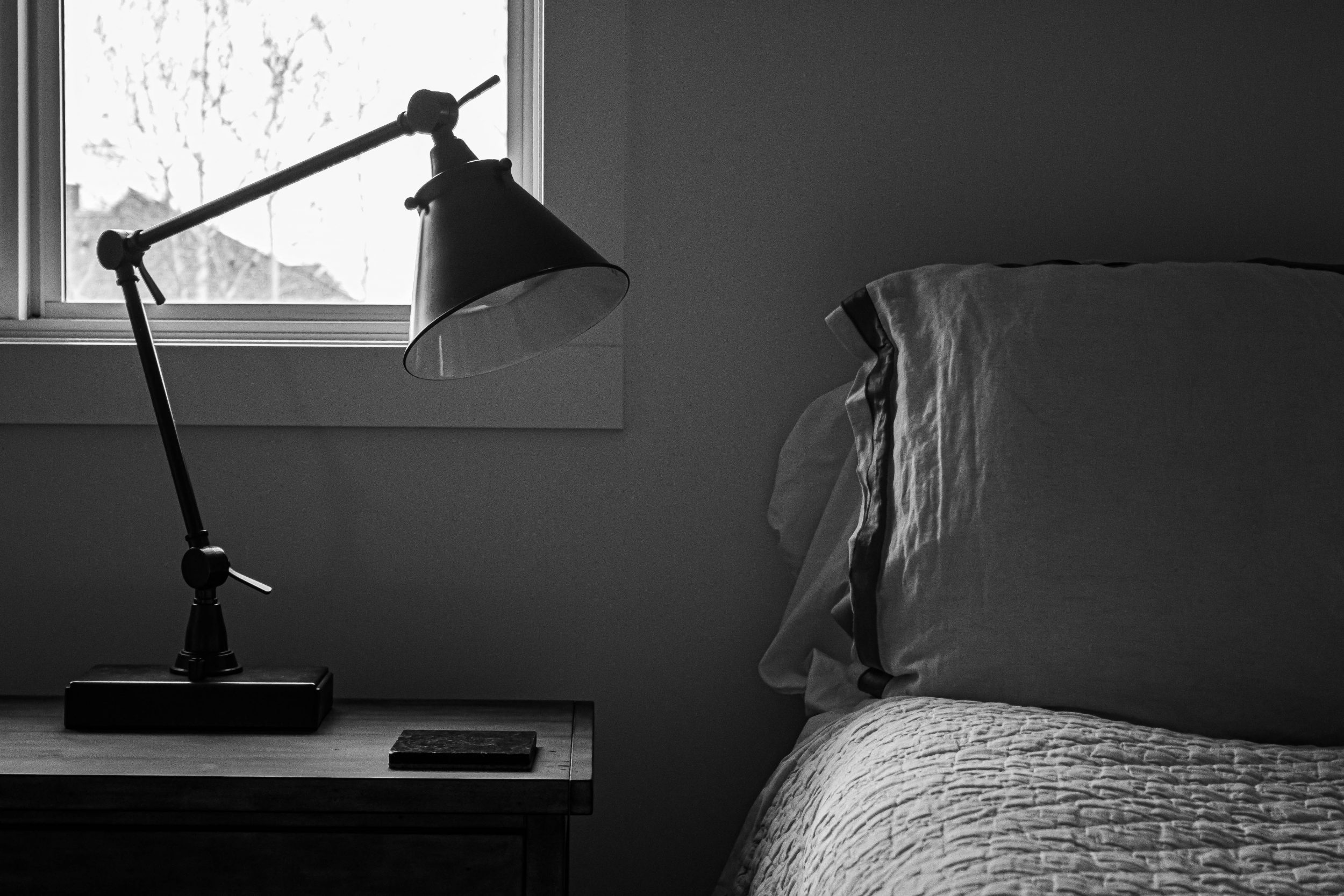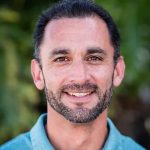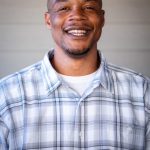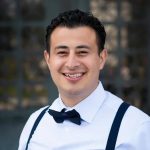More than 600,000 people are released from prison every year, which means that many people will be transitioning home from a place where trauma, stress, and other hardships are commonplace. Reentry, as this transitional period is called, comes with huge barriers to housing, employment, and our well-being. We know this because we’ve experienced these hardships ourselves—include the anxiety of knowing that any misstep during this period could have landed us back in prison.
Of the more than 500 reentry facilities in the United States today, most operate under rules that mirror the prison environment, with punishment for minor infractions, abstinence-only policies that do not work, and the constant threat of being sent back to prison. This approach hasn’t worked.
Effective reentry requires that a person be in an environment that is supportive (not stressful), caring (not traumatizing), and where basic needs are met (not deprived). Current reentry housing programs deprioritize these basic human needs in favor of control and authority, and thereby perpetuate cycles of trauma and reincarceration over the long run.
The time is ripe for private and public funders to partner with community-based practitioners and leaders to break these cycles. By enacting a new standard of reentry, we can achieve lasting success. We at The Ahimsa Collective are practitioners of community-based, resident-centered reentry housing and care, and we are formerly incarcerated people with personal experience with these systems. In the San Francisco Bay Area, we run numerous reentry programs, including reentry housing. The aim of this Inquest feature is to share our core values and principles that we have developed over years of personal and professional experience.
When system-impacted people have access to safe housing, material necessities, and a supportive community, they then have the ability to heal, thrive, and build healthy relationships. If the reentry housing across the country were to follow what we like to call a “people-first reentry model,” then many thousands fewer people would return to prison each year, and would instead be on a path to success, agency, human dignity, and connection.
In even the most well-run status quo reentry facilities, residents are subject to rigid and punitive rules, extreme lack of privacy, interrupted family relationships, and alienation from the real world that they are trying to learn to navigate. They worry about whether their belongings are safe, whether their housing and freedom will be jeopardized by a small misstep, and whether they will have a place to live once their time in the program ends. Taken together, these stressors delay and damage people’s ability to heal from trauma, build relationships with families and communities, access resources that support their well-being, and freely pursue lives of meaning, all of which are essential to ensuring healthy and effective reentry.
More from our decarceral brainstorm
Inquest, finalist for the 2025 National Magazine Award for General Excellence, brings you insights from the people working to create a world without mass incarceration.
Sign up for our newsletter to get the latest in your inbox every Saturday.
Newsletter
As longtime practitioners in reentry, we have helped to develop and lead approaches that treat people with dignity and respect, and it works. Our housing-based reentry programs adopt the following six people-first principles:
1. Agency is sacred. Each person’s capability to make choices, to act according to their own will, and to decide what they want in life must be honored. This means honoring each person’s need for privacy, reliable access to personal space, control over their belongings, freedom to connect with loved ones, and opportunities to participate in a community where everyone has a voice. This ensures that participants spend their time and effort reestablishing healthy relationships and learning the skills they will need to live independently. When agency is not present, it often shows up as people being forced to participate in programs, being kept away from family and friends, or having prison-like restrictions in place, such as mandatory drug treatment programs and invasive searches. In our experience, these agency-destroying tactics are ineffective.
2. Lived experience in leadership is essential. As a matter of both equity and practical wisdom, it is important to elevate people with lived experience of incarceration and reentry into the leadership roles of any people-first reentry support provider. This ensures that participants can learn from—and find role models in—people who have walked in their shoes, deeply understand their experience, and have attained positions of authority and respect. By contrast, the “I know what’s best for you” attitude in many status quo programs undermines the agency of participants and leads to bad judgment calls about how to meet their needs.
3. A commitment to meeting basic human needs is fundamental. People are not truly free to thrive unless and until their needs for food, warmth, safety, and connection are fully met. The basic necessities must be provided free of charge. This fosters an atmosphere of healing and support, allowing for participants to build trust and relationships and grow into their new life. Revenue-focused reentry models that charge residents for rent, food, or clothing cannot meet this standard. Charging for or withholding basic human needs can result in a person going back into survival mode, just like when they were in prison, and prevents growth and learning.
4. Trauma awareness is critical. Each person impacted by incarceration has a unique trauma history and needs healing, and that need must be met with open-mindedness, cultural awareness, and compassion. When reentry support is led by those with lived experience of incarceration and trauma healing, there is an understanding that is not possible with someone who has not experienced it. In reentry support programs that lack this value, it often shows up as providers who have never been incarcerated themselves pathologizing and antagonizing residents, jumping to a “fix it” approach, or rushing to make diagnoses based on expected reimbursement for corresponding medications. A people-first approach focuses on how to heal what happened to residents, in partnership with leaders and facilitators who have been healed themselves.
5. Allowing for flexibility is key. No two reentry success stories are the same, and people come in with different needs and priorities. Some folks leave prison with new certifications or degrees but need help finding a job in their chosen field. Others leave with important family relationships they need to reestablish. All leave with wholly unique struggles that take time to overcome. A people-first approach prioritizes flexibility, recognizes that different participants have different needs and pathways to success, and fits programming efforts around the individualized needs of the people in their care. In reentry support programs that lack this value, it often shows up as programs with a hard, predetermined end date. Many of us have been forced by reentry programs to choose between education or a job, or have been kept away from our families for months, or have been forced into time-consuming treatment programs for a problem we didn’t have. When a reentry support program fills a person’s time with frivolous requirements that offer little in return, and restricts people from doing what will help them heal, and then kicks them out of housing suddenly, before they are ready to land on their feet—they are setting people up to fail due to their program’s own rigidity.
6. Taking a restorative approach to conflict and harm is necessary. Harm happens. All of us, at times, break the rules, or fail to live up to our personal values or those we set together within our communities. A restorative, people-first approach to conflict and harm gives people space to be human. It invites residents to cocreate shared values and to participate in the process of addressing situations involving those values. It involves choosing not to punish people or kick them out of a program when they disrespect their community’s values or make a mistake. A people-first approach searches for the cause of the harm and deploys all available means to heal it. Only through this restorative process are we able to build containers for resolution, safety, and trust in our homes and communities. Unfortunately, few reentry programs allow for any mistakes. When reentry providers fail to take a restorative approach, it looks like constant supervision, strict technical violations, and punishing people for struggling rather than helping them get through challenges. What this causes is residents who live in constant terror of slipping up and getting caught, and programs missing critical opportunities to help people heal from harm, into a more stable and free life. Up against these strict standards of control and punishment, many participants keep their most challenging struggles a secret, bottled up and unaddressed, only to explode later.
Below, two people who experienced Ahimsa’s people-first approach to reentry share their experiences.
Anthony Ammons, 38
I recently started going to school. I study humanities at San Francisco City College. I also work for the California Department of Justice under Attorney General Rob Bonta, where I’m a special projects coordinator for the CARE Unit.
At 16 years old, I committed a crime of murder and two attempted murders. I was convicted and sentenced to 102-years-to-life in California state prison. I started prison at 17. But while I was doing my 20 years, I didn’t care about life. For the most part, I didn’t care about anybody because I was not supposed to get out until 2103.
Instead, after Governor Jerry Brown commuted my sentence, I paroled on April 21, 2021. I didn’t know where I was going to parole. All I knew was that I wanted to parole to somewhere where I felt safe. Rasheed Lockheart, one of my mentors, was like, “Hey, we opened up this new house,” and I’m like, “I’m not going there. I don’t know what that’s like.”
It was different. It was new. I felt scared.
But I think the first questions I was asked when I arrived at the Ahimsa house were, How can we support you? What do you need? And that was different because everybody that I always talked to about parole, they always say: “Well, we want to give you what we want to give you. We want you to go in this direction.” But the Ahimsa staff were like: What do you want to do? How can we help you find yourself out here? And how can we help you go out here?
One of the biggest things that they offered was the family unification. That made a difference because my mom and I came up here from Los Angeles. My family didn’t have nowhere to stay. And I was told, “Oh, we got a home with room right here.” And that’s huge because they show that they wanted to reintegrate us into our family, which helps us become more human as we go along our transitional journey.
Richard made it a point to say: “Hey, what do you need to find your agency? Here’s a bus pass that is unlimited, that you can travel to wherever you want to go. You know what to do without having us with you. We can connect with the church across the street that donates food to people. If you want to work around the house to make the house look better, we’ll pay you $35 an hour.”
One of the most powerful things Richard taught me was my own worth.
Richard had a van, and he sat there and said, “Can you clean up this van?”
I was cleaning cars just for fun, and to make some extra dollars. And I said, “OK, how much?”
He said, “How much do you want for cleaning out the van inside and out?”
I said, “I don’t know.”
He said, “Well, I can’t tell you what you’re worth.” He said, “You have to tell me what you’re worth.”
And I think that was valuable. Because that helped me to feel confident within myself to say that I’m valuable as a person.
I had a long-lasting issue with those who committed sexual harm. I lived in this gang lifestyle that held that that was one of the worst things you could do. However, people who commit sexual harm are people too, and what if we look at them as human beings who are sick, and who need help? So now I volunteer my time to go into the prison to teach those that committed sexual harm, because they’re an underserved population that also needs to be seen as human beings. Because if they’re seen as human beings, they’re more likely to change their thought process in ways just like somebody saw me as a human being. That way, I was able to help myself change my thinking and grow and be better.
If we want people to respect and appreciate society, we have to love them. And by loving them, we treat them with respect, not because of what they’ve done, but because of who they are. Because at the end of the day, they’re human beings, and I am a human being. And when you treat me as less than, then I act accordingly to how I’m treated. However, at the same time, if you support me in what I want to do and what I need to become for myself, not for anybody else, that is the biggest self-security you can give someone. To ask me: Hey, how can I support you?
David Carranza, 29
In 2012, when I was a senior in high school, I was sentenced to life in prison. And throughout my incarceration, I spent time reflecting on what mattered to me most in life. I was fortunate enough to get my sentence commuted by Governor Jerry Brown of California, which allowed me to have an opportunity to come home sooner than the fifteen-years-to-life that I was sentenced to. Ultimately, I did about eight years and then was paroled. I got out on October 11, 2019. I decided to come to the Bay Area to get a fresh start in life. Just a brand-new beginning.
It was a double-edged sword. Coming to the Bay Area, I was away from all the gangs and violence and drugs in my community. However, all the resources and networks that I had were all in Los Angeles. So when I came to the Bay Area, I had no resources, no networks, no friends, no family. So I had to start from zero. Well, actually, not zero: I had to start from negative 11,000, because I owed restitution to the government. And I was placed in a reentry program run by GEO Group, a for-profit, publicly traded company on the stock market.
And when I got there, it was exactly like prison, except that I was placed in the middle of the city. As far as the beds, there was about six people to one room. The food was actually worse than prison. But I had limited freedom. They still referred to me as my prison ID number. And they still did “count times” in the middle of the night, waking us to make sure we were in our beds.
All along, my relationship with my parole officer wasn’t great. She felt that, at any moment, I was going to do something that I wasn’t supposed to be doing. She always threatened to take me back to prison. Whether I was applying for a job, or going to college, she’d always say, “I’m gonna send you back to prison.” I felt like she had a noose around me, that at any moment my freedom could be taken from me. It just didn’t make any sense. And I did have restrictions. I couldn’t travel more than fifty miles. My family is from LA, and I hadn’t seen my dad for over five years. A lot of my nieces and nephews there were born while I was incarcerated, so I hadn’t met them yet. So for my first Christmas and Thanksgiving and New Year’s after I left prison, I wanted to go visit them. But my parole officer refused to let me go. The first year that I was home, I spent my birthday, Thanksgiving, Christmas, and New Year’s alone.
I wanted to look for a job, and I wanted to continue my education, because I was able to get my high school diploma and my associate’s degree while incarcerated. I remember I really wanted to transfer to UC Berkeley. And UC Berkeley was hosting a workshop to get assistance with applications. And so I asked the director of the GEO reentry house if I could go, and he said I couldn’t go. And I begged, because it was my future on the line. And it was something that was going to assist me in my future. My parole officer backed the director, and threatened to take me back to prison if I tried to go enroll in college. Long story short, they finally allowed me to go, I went, and I applied. And I actually got into Berkeley while I was in GEO.
Seven months into the program, COVID hit. And there was a lot of people coming home from prison. They didn’t have enough beds to house people. And I was very happy to leave. That’s when I made my journey back to Oakland. I received assistance from a program to pay rent. At the time it was very difficult for me to get a good paying job because of my lack of work experience and skills since I had been incarcerated since I was a teenager. So I was dependent on their rental assistance to cover the remaining portion of my rent. Unfortunately, that program was pulled from me. I was going to school full time and working full time. And I was on the waitlist for university housing already for a year and a half.
That’s when one of my coworkers told me that he was at the Ahimsa house, and that I could potentially go there. He told me it was a transitional house. But it wasn’t your normal transitional house. And since I was still on parole, I would be able to go there. But I felt that I shouldn’t go to the transitional housing. I had already been out longer than most folks who are coming home. And I felt like I was undeserving to be there because I would be taking someone else’s place. But Ahimsa’s codirector, Richard, assured me that this was exactly what the program was for. It’s just to help people who are reentering, whether they’re a month home, or further down the line, they’re there to support you, no matter what. And that’s how I ended up here in the end.
The place felt immediately different. It didn’t feel like an institution. It didn’t feel like a prison. Like you walk in and you feel like you’re at a house, that you’re home. It was the first time that I had my own room since I can remember. The first time I had my own bed. It was the first time I held my own space. And the people who were there, like my housemate Anthony and my other housemates, they became like my brothers. And it was a place where I could finally decompress from always being on alert. It felt like there was finally a place I can call home, rather than just have to survive.
One of the first things Richard said was, “Right here, you have a voice. This is your place.” I felt like for many years, I never had a voice. I’ve always had to do what I’ve been told to do. This felt like freedom—the ability to be free to just speak up and share my thoughts, my feelings, my ideas. A place where I can just have my voice heard.
The second thing he said was, “You’re exactly your independence. Right here, you can follow whatever goals or dreams you might have.” And they’ll support you throughout that process, which was completely opposite from what I had experienced. What I had experienced was: I’d share my goals, draw my dreams, what I wanted to do, and then be told no. Or that those things were still years away. At Ahimsa, those barriers were removed.
The introduction was adapted from The Case for People First Reentry, by Richard Cruz and The Ahimsa Collective. The narratives by Anthony Ammons and David Carranza are adapted from interviews conducted in July by Inquest senior editor Cristian Farias. They have been edited and condensed for clarity.
Image: James Yarema/Unsplash



